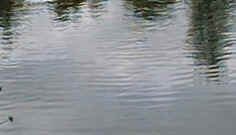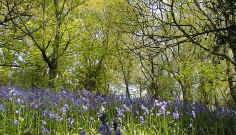| Ecological succession is the gradual
process by which ecosystems change and develop over time. Nothing remains the same and
habitats are constantly changing. There are
two main types of succession, primary and secondary.
Primary succession is the series of community
changes which occur on an entirely new habitat which has never been colonized before. For
example, a newly quarried rock face or sand dunes.
Secondary succession is the series of community changes which take place
on a previously colonized, but disturbed or damaged habitat. For example, after felling
trees in a woodland, land clearance or a fire.
The Major Points: |
- The species living in a particular place gradually change over time
as does the physical and chemical environment within that area.
- Succession takes place because through the processes of living,
growing and reproducing, organisms interact with and affect the environment within an
area, gradually changing it.
- Each species is adapted to thrive and compete best against other
species under a very specific set of environmental conditions. If these conditions change,
then the existing species will be outcompeted by a different set of species which are
better adapted to the new conditions.
- The most often quoted examples of succession deal with plant
succession. It is worth remembering that as plant communities change, so will the
associated micro-organism, fungus and animal species. Succession involves the whole
community, not just the plants.
- Change in the plant species present in an area is one of the driving
forces behind changes in animal species. This is because each plant species will have
associated animal species which feed on it. The presence of these herbivore species will
then dictate which particular carnivores are present.
- The structure or 'architecture' of the plant communities will also
influence the animal species which can live in the microhabitats provided by the plants.
- Changes in plant species also alter the fungal species present
because many fungi are associated with particular plants. more
- Succession is directional. Different stages in a particular habitat
succession can usually be accurately predicted.
- These stages, characterised by the presence of different communities,
are known as 'seres'.
- Communities change gradually from one sere to another. The seres are
not totally distinct from each other and one will tend to merge gradually into another,
finally ending up with a 'climax' community.
- Succession will not go any further than the climax community. This is
the final stage.
This does not however, imply that there will be no further change. When large
organisms in the climax community, such as trees, die and fall down, then new openings are
created in which secondary succession will occur.
- Many thousands of different species might be involved in the
community changes taking place over the course of a succession. For example, in the
succession from freshwater to climax woodland.
- The actual species involved in a succession in a
particular area are controlled by such factors as the geology and history of the area, the
climate, microclimate, weather, soil type and other environmental factors.
For example, the species involved in a succession from open freshwater to climax woodland
in Central Africa, would be quite different to those which have been quoted in these pages
as occurring in Britain. However, the processes involved would be
the same.
- Succession occurs on many different timescales, ranging from a few
days to hundreds of years.
It may take hundreds of years for a climax woodland to develop, while the succession of
invertebrates and fungi within a single cow pat (cow dung), may be over within as little
as 3 months.
By this time, the dung has been transformed into humus and nutrients and has been recycled
back into the soil. The holes clearly visible in the cow pat (right) have been made by the
animals which have colonized it.
|
 |
|







